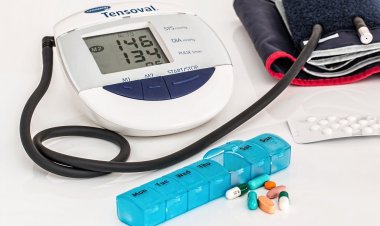Early signs of breast cancer
Early on, a person may notice a change in their breast when they perform a monthly breast exam or when minor abnormal pain doesn’t seem to go away. Early signs of breast cancer to look for include:
changes in the shape of the nipple
breast pain that doesn’t go away after your next period
a new lump that doesn’t go away after your next period
nipple discharge from one breast that’s clear, red, brown, or yellow
unexplained redness, swelling, skin irritation, itchiness, or rash on the breast
swelling or a lump around the collarbone or under the arm
A lump that’s hard with irregular edges is more likely to be cancerous.
Later signs of breast cancer
Later signs of breast cancer include:
retraction, or inward turning of the nipple
enlargement of one breast
dimpling of the breast surface
an existing lump that gets bigger
an “orange peel” texture to the skin
poor appetite
unintentional weight loss
enlarged lymph nodes in the armpit
visible veins on the breast
Having one or more of these symptoms doesn’t necessarily mean you have breast cancer. Nipple discharge, for example, can also be caused by an infection. See a doctor for a complete evaluation if you experience any of these signs and symptoms.
What is a “normal” breast?
As you might suspect, there’s really no such thing as a “normal” breast. Everyone’s breasts are different. So, when we talk about normal, we mean normal for you. It’s about how your breasts usually look and feel and what it could mean when this changes.
It’s worth noting that it’s common to experience breast changes during ovulation. This may have to do with extra fluid retention, which can cause:
swelling
tenderness, soreness
pain
lumpiness
These symptoms should resolve after you start your period.
Breast self-checks
Regular self-checks can help you get to know how your breasts normally look and feel so you’ll recognize changes early on. Here’s what to look for:
difference in overall size, shape, or color of your breasts
dimpling or bulging of the skin
redness, soreness, rash, or swelling
nipple inversion, unusual discharge
How to perform a breast self-check
Stand in front of a mirror with your shoulders straight and arms on your hips. Visually inspect your breasts.
Repeat with your arms raised.
Lie down on your back to feel your breasts. First, use your right hand to check your left breast. Use the pads of your fingers and move in a circular motion to feel for lumps or other changes. Be sure to cover the entire breast, from the center of your chest to your armpit and from your abdomen to your collarbone.
Repeat using your left hand to check your right breast.
Repeat while standing or sitting. You might find it easier to do this in the shower.
Are breast lumps typically cancerous?
Although a lump in the breast is typically associated with breast cancer, most lumps aren’t cancerous. In fact, about 75 percentTrusted Source of breast biopsies come back with a diagnosis of benign breast disease.
Common causes of benign breast lumps include:
breast infection
fibrocystic breast disease (“lumpy breasts”)
fibroadenoma (noncancerous tumor)
fat necrosis (damaged tissue)
With fat necrosis, the mass can’t be distinguished from a cancerous lump without a biopsy.
Even though the majority of breast lumps are caused by less severe conditions, new, painless lumps are still the most common symptom of breast cancer.
Other causes of breast pain and tenderness
We often associate pain with something wrong, so when people feel tenderness or pain in their breast, they often think of breast cancer. But breast pain is rarely the first noticeable symptom of breast cancer. Several other factors can cause pain.
Clinically known as mastalgia, breast pain can also be caused by the following:
the fluctuation of hormones caused by menstruation
some birth control pills
some fertility treatments
a bra that doesn’t fit well
breast cysts
large breasts, which may be accompanied by neck, shoulder, or back pain
stress
Types of breast cancer
There are two categories that reflect the nature of breast cancer:
Noninvasive (in situ) cancer is cancer that hasn’t spread from the original tissue. This is referred to as stage 0.
Invasive (infiltrating) cancer is cancer that’s spread to surrounding tissues. These are categorized as stages 1, 2, 3, or 4, depending on how far it has spread.
The tissue affected determines the type of cancer. For example:
Ductal carcinoma. Ductal carcinoma is a cancer that forms in the lining of the milk ducts. This is the most common type of breast cancer.
Lobular carcinoma. Lobular carcinoma is cancer in the lobules of the breast. The lobules are where milk is produced.
Sarcoma. This is cancer that starts in the breast’s connective tissue.
Angiosarcoma. This type starts in cells that line blood vessels or lymph vessels.
Breast cancer can also be categorized based on certain features, although early signs and symptoms are similar. Among them are.
Hormone-positive breast cancer. Hormone-positive breast cancers are fueled by estrogen and/or progesterone.
HER2-positive breast cancer. Human epidermal growth factor is a naturally occurring protein that helps breast cancer cells thrive. If your cancer has high levels of this protein, it’s called HER2-positive.
Triple-negative breast cancer. Triple-negative breast cancer tests negative for estrogen receptors, progesterone receptors, and HER2.
Papillary breast cancer. Under microscopic examination, papillary breast cancer has small, finger-like growths called papules. It can be made up of both invasive and noninvasive cells.
Metaplastic breast cancer. Metaplastic breast cancer may contain abnormal ductal cells along with other types of cells, like skin or bone cells that aren’t usually found there. It’s typically triple-negative.
Some types of breast cancer are more likely to present with symptoms other than a breast lump. For example:
Inflammatory breast cancer. In inflammatory breast cancer, cancer cells block lymph vessels in the skin of the breast. It is so named because the breast appears swollen, red, and inflamed.
Paget’s disease of the breast. Paget’s disease develops around the skin of the nipple and areola. The area may look red and crusty or scaly. The nipple may flatten or become inverted and there may be blood or yellow discharge. Other symptoms include burning or itching.
Metastatic breast cancer. Metastatic breast cancer is breast cancer that has spread to distant parts of the body. It’s also called advanced or stage 4 breast cancer. Symptoms may include weight loss, unexplained pain, and fatigue.
Male breast cancer
Breast cancer isn’t typically associated with people who were assigned male at birth. But male breast cancer can occur in rare instances at any age, although it’s more common in older men.
Many people don’t realize that everyone has breast cells, and those cells can undergo cancerous changes. Because male breast cells are much less developed than female breast cells, breast cancer isn’t as common in this part of the population.
The most common symptom of breast cancer in people assigned male at birth is a lump in the breast tissue. In addition to a lump, symptoms of male breast cancer include:
thickening of the breast tissue
nipple discharge
redness or scaling of the nipple
a nipple that retracts or turns inward
unexplained redness, swelling, skin irritation, itchiness, or rash on the breast
swollen lymph nodes beneath the arm
Since men may not regularly check their breast tissue for signs of lumps, male breast cancer is often diagnosed at a later stage.
Diagnosing breast cancer
When you visit a doctor with concerns about breast pain, tenderness, or a lump, there are common tests they might perform.
Physical examination
Your doctor will examine your breasts and the skin on your breasts, as well as check for nipple problems and discharge. They may also feel your breasts and armpits to look for lumps.
Medical history
Your doctor will ask you questions about your health history, including any medications you might be taking, as well as the medical history of immediate family members.
Because breast cancer can sometimes be related to your genes, it’s important to tell your doctor about any family history of breast cancer. Your doctor will also ask you about your symptoms, including when you first noticed them.
Mammogram
Your doctor may request a mammogram, which is an X-ray of the breast, to help distinguish between a benign and malignant mass.
Ultrasound
Ultrasonic sound waves can be used to produce an image of breast tissue.
MRI
Your doctor may suggest MRI in conjunction with other tests. This is another noninvasive imaging test used to examine breast tissue.
Biopsy
This involves removing a small amount of breast tissue to be used for testing. This is the only way to confirm a diagnosis of breast cancer.
Learn more about breast cancer tests.
Treating breast cancer
Depending on the type and stage of cancer, treatments can vary. But there are some common practices doctors and specialists use to combat breast cancer:
A lumpectomy is when your doctor removes the tumor while leaving your breast intact.
A mastectomy is when your doctor surgically removes all of your breast tissue including the tumor and connecting tissue.
Chemotherapy is the most common cancer treatment, and it involves the use of anticancer drugs. These drugs interfere with cells’ ability to reproduce.
Radiation uses radiation beams to treat cancer directly.
Hormone and targeted therapy can be used when hormones or HER2 play a part in the cancer’s growth.
Signs and symptoms of breast cancer recurrence
Despite initial treatment and success, breast cancer can sometimes come back. This is called recurrence. Recurrence happens when a small number of cells escape the initial treatment.
Symptoms of a recurrence in the same place as the first breast cancer are very similar to symptoms of the first breast cancer. They include:
a new breast lump
changes to the nipple
redness or swelling of the breast
a new thickening near the mastectomy scar
If breast cancer comes back regionally, it means that the cancer has returned to the lymph nodes or near to the original cancer but not exactly the same place. The symptoms may be slightly different.
Symptoms of regional recurrence
Symptoms of a regional recurrence may include:
lumps in your lymph nodes under the arm or near the collarbone
chest pain
pain or loss of sensation in your arm or shoulder
swelling in your arm on the same side as the original breast cancer
If you’ve had a mastectomy or other surgery related to breast cancer, you might get lumps or bumps caused by scar tissue in the reconstructed breast. This isn’t cancer, but you should let your doctor know about them so they can be monitored.
Breast cancer outlook and prevention
As with any cancer, early detection and treatment are major factors in determining the outcome. Breast cancer is easily treated and usually curable when detected in the earliest stages.
Breast cancer is the most common cancer in women, according to the World Health OrganizationTrusted Source. Whether you’re concerned about breast pain or tenderness, it’s important to stay informed on risk factors and warning signs of breast cancer.
The best way to fight breast cancer is early detection. Talk with your doctor about when you should start breast cancer screening.
If you’re worried that your breast pain or tenderness could be something serious, make an appointment with your doctor today. If you find a lump in your breast (even if your most recent mammogram was normal) see your doctor.
Finding support when living with breast cancer
Learning you have breast cancer can be overwhelming, but you’re not alone. You might find it helpful to connect with others who have been through the same thing or are going through it right now.
Your oncologist or treatment center can probably point you toward local resources. There are many types of support groups, so it may take a little time to find one that’s a good fit. Here are a few organizations to get you started on your search.
After Breast Cancer Diagnosis: Customized Support
American Cancer Society: Cancer Survivors Network and Reach to Recovery
Breastcancer.org: Find Your Community
Cancercare: Breast Cancer Patient Support Group
Living Beyond Breast Cancer: In-person, Online, and Phone Support
ShareCancerSupport.org: Educational Programs and Support Groups
Young Survival Coalition: Private Facebook Groups and Virtual Hangouts
For support at your fingertips, check out Breast Cancer Healthline. It’s a convenient app for anyone at any stage of breast cancer. Here you can make connections and find information on topics like new diagnoses, treatment, lifestyle, relationships,












